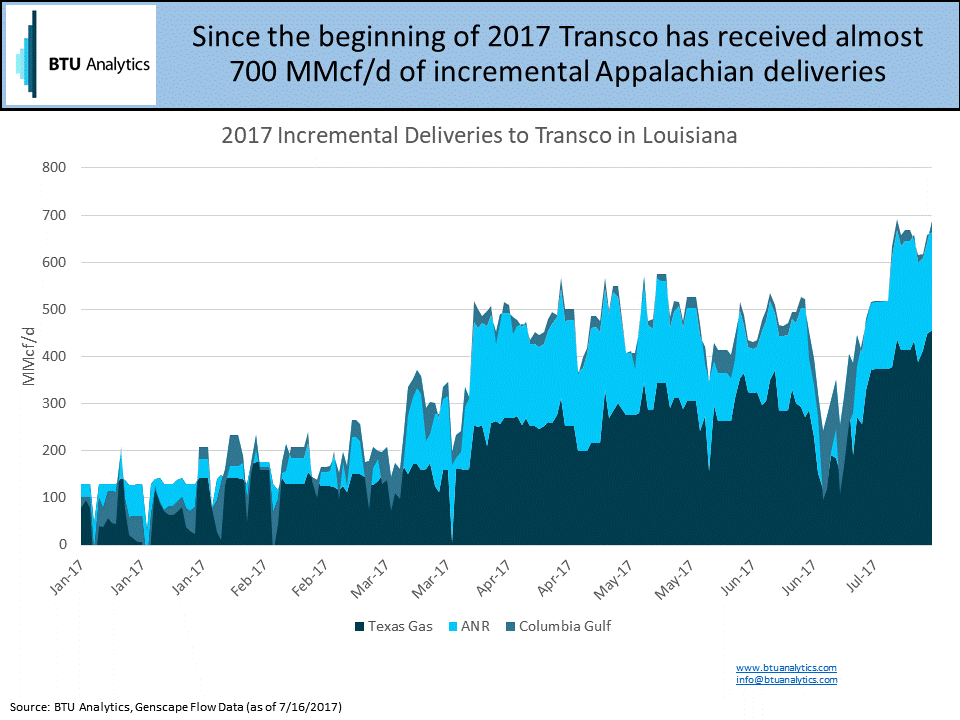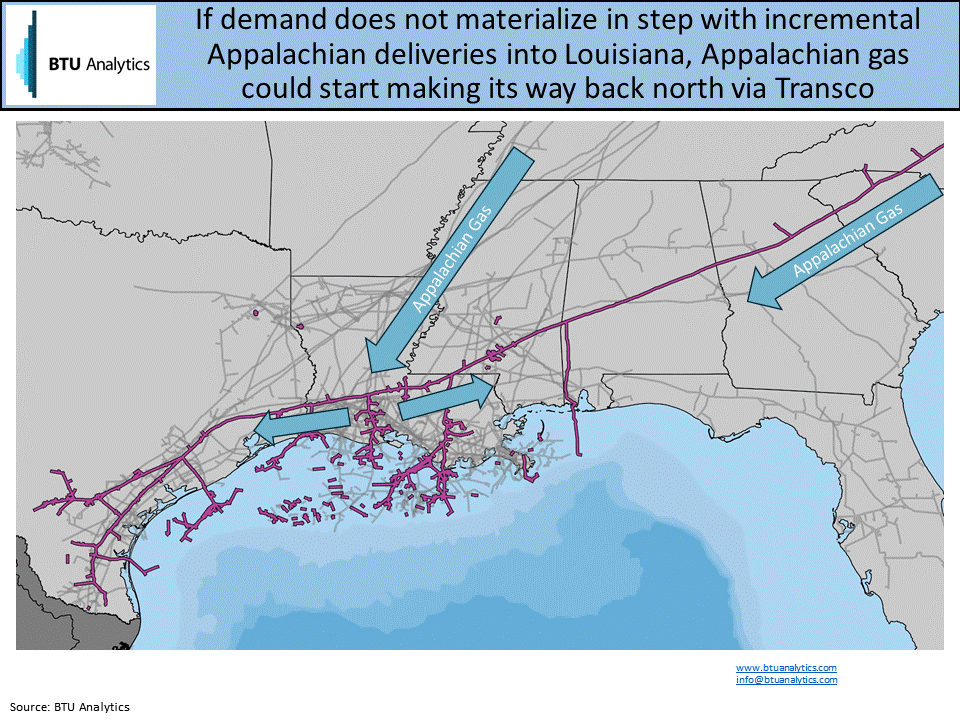It has been well documented that the growth of Marcellus and Utica gas production has altered flow dynamics on Transco. We have previously cited how Appalachian gas has continued to push farther and farther south (Transco Null Point Rambles South). However, Appalachian gas is impacting Transco in another way – backhaul projects out of Western Pennsylvania, Ohio, and West Virginia are increasingly delivering volumes onto Transco in Louisiana.
Let’s focus on three pipes: ANR, Columbia Gulf (CGT), and Texas Gas (TGT). CGT and TGT both bring supply directly from the Northeast down to the Gulf. ANR on the other hand does not bring supply in directly. Instead, it receives almost all its supply on its Southeast Mainline from Appalachian sources via REX or the Lebanon Hub.

As long awaited backhauls out of the Northeast come to fruition, more Appalachian gas is finally able to make its way down to the Gulf. Of the three pipelines highlighted above, we have seen increasing southbound flows, which has translated into increased deliveries onto Transco in Louisiana. ANR has taken increased volumes from REX as that pipe has had its recent expansions, TGT has had two consecutive backhaul projects with its Ohio-Louisiana Access Project and Northern Supply Access Project, and CGT has begun to backhaul Appalachian gas with more expected to come when its Rayne and Gulf Xpress projects come online this year and next, respectively. All of that activity has caused deliveries from Appalachia to Transco to increase by almost 700 MMcf/d.

So, what does all this mean for Transco’s southern end? The Texas/Louisiana border has essentially become a null point on Transco, where northbound flows have virtually dropped to zero in the last three months, averaging 50 MMcf/d (compared to about 250 MMcf/d the same time last year). Since more Appalachian gas is supplying Transco in Louisiana, that means less gas is needed from the Eagle Ford and offshore areas of Texas to move north out of Texas. Hence, flows at the Texas/Louisiana border have dropped to nothing.
And there is more Appalachian gas to come, as more backhaul projects come online. Columbia Gulf alone has approximately another 2 Bcf/d of backhaul on the way. Of course, not all of that gas will hit Transco directly. Instead, incremental deliveries should be tied to new demand coming online, mainly at LNG Export Terminals (Sabine Pass Train 4, Cameron LNG, etc.). A problem emerges, however, if demand does not materialize on time and at the expected capacity. This could leave Appalachian gas stranded in Louisiana looking for a route out to more premium markets, with the most likely route to push eastbound on Transco up the Atlantic Seaboard.

That would set the scene for an ironic and unfortunate situation. After years of waiting for Appalachian infrastructure, gas from both Eastern and Western Appalachia would find themselves vying for the same demand in the Southeast and Atlantic Seaboard markets. For more on how Appalachian gas is changing flow dynamics across the country see our upcoming edition of the Northeast Gas Outlook.









